AUGUSTA — Plans to restore and re-purpose the only remaining building of the massive riverfront Edwards mill complex may rely on attracting a private developer or organization with $3 million to spend.
The complex at one time employed thousands of Franco-Americans who came to Augusta to create a better life for their families by toiling and sweating in the cotton mill.
Advocates for renovating the piece of Augusta’s working-class history for new uses — such as a cafe and museum or heritage center — say it could pay tribute to the people whose labor fueled the growth of the city and could draw visitors to an area they say is a largely undiscovered gem.
“I felt compelled to do this project because I believe in the history of the people who worked here to help develop the city,” said Jan Michaud, of Augusta, leader of the nonprofit group Friends for a Heritage Center in Mill Park. “Especially because their offspring are part of our community today and many of them are doctors and lawyers and business people and community folks, firefighters, police officers, who make Augusta a good place to live. There is so much we need to share.”
A majority of city councilors agreed informally on Thursday to have city staff put together a request for proposals seeking a developer, business person or any other entity with the ability, interest and funds. The proposal would call for redeveloping the two-story, 30-by-60 foot, brick structure, known as the transformer building, which is currently only used by the city for storage.
Councilors heard a presentation from architects Thursday, who worked with a city committee to come up with potential concepts for how to re-purpose the building. They outlined a design concept for the building featuring space for a heritage center, gallery or museum, a visitors center, a cafe or restaurant, and an addition to the building to provide restrooms that could be used both by visitors to the building but also by users of the sprawling city park.
The park now occupies the space where the mill loomed until it was destroyed by a huge fire in 1989.
The architect, Judy Johnson, said it would cost an estimated $3 million to restore and re-purpose the building in that way. With the addition and two existing floors, the building would total 5,489 square feet.
Mayor David Rollins and At-Large City Councilor Corey Wilson expressed skepticism a private developer would step forward to make that much of an investment. The building seems too small to contain a restaurant large enough to recoup a $3 million investment, Wilson said.

Workers leave Edwards Mill in Augusta Maine in this 1984.
“It is a marvelous idea,” Wilson said. “But I, not to be mean, but I don’t know that there is going to be a whole lot of developers who want to spend $3 million on a restaurant of that small size. The return on investment would be pretty minimal. There may be some organizations genuinely interested in furthering the city of Augusta and the community, who’d do it out of, maybe, their generosity. But from an investment perspective, I wouldn’t think they’d see it as a good investment.”
Michaud and some city councilors said the city won’t know whether seeking a developer or organization to take on the project will be successful, unless it tries. At-Large City Councilor Marci Alexander said visitors to the park, where an increasing number of summer events are being scheduled, could provide potential customers to a business locating in the building. And users of the park would benefit from having a nice public restroom. Now, the only restrooms at the park are portable toilets.
“This little business would have access to all those people,” Alexander said of attendees who come to the farmers market in the park, or to music, food and brew festivals planned there, or nearby, this summer. “I’d love to see this. Maine is known for its hard workers. I totally get that mill job and culture and family atmosphere of what it took to do those mill jobs. And I like the idea of doing it through private development.”
Ward 1 Councilor Linda Conti suggested the city could issue a bond to borrow funds to convert the building. She said the city should be public-minded about preserving its public buildings.
Michaud said when she approached city officials a few years ago about the project, she was told she had to “wait her turn,” as a new Cony High School, new MaineGeneral Medical Center, and expanded and renovated Lithgow Public Library were built.
Rollins said those projects each involved a significant amount of fundraising to provide private dollars to help pay for them. He said public-private partnerships have proven to be a successful model major for building projects in Augusta. However, he also expressed concerns trying to restore the mill building, which is inside Mill Park off Canal Street, could compete with the already underway efforts to raise funds to restore the Colonial Theatre, a short distance away on Water Street.

This circa 1909 photo shows the Edwards Manufacturing Company mill, left, and dam, right, on the banks of the Kennebec River in Augusta.
“Nobody would love seeing that building used as a cultural center and all the ways you talked about it than I would,” Rollins said. “To say we’re just going to bond this, I don’t think that would be successful. To put it out as a request for proposals, I spent a year observing that process at the Statler site, and that model has not been successful.”
Last year the city issued a request for proposals seeking a developer to redevelop the also city-owned former Statler mill site, across the river from Mill Park. It got no responses.
Michaud said fundraising isn’t her area of expertise and that her interest is in history and preservation, but she said she’d be willing to help. She and others have, over the last several years, interviewed 80 area residents who worked at the old cotton mill, Statler, former shoe factories and former Kirschner meat plant, about their lives and work in Augusta, to preserve their stories. Video footage of those interviews, she said, could be part of the heritage center in the only remaining building from the mill complex.
The friends group and city had hoped to get grant funding for the project, but have, so far, been unsuccessful.
Mill Park overlooks the Kennebec River and has seen the addition of amenities in recent years including a riverwalk paved walkway around its perimeter, a petanque court and a dog park.

Part of the Edwards Mill and dam in Augusta are seen in 1993. Most of the mill burned in 1989 fire. The remaining buildings in this photo and the dam have since been removed.
The city acquired the 17 acres of now park-land and the last mill building as part of a deal between the city, state and former owners of the mill, to remove Edwards dam. The dam previously powered the mill and, up until the Federal Energy Regulatory Commission ordered it to be removed in 1998, still produced some electricity, according to City Manager William Bridgeo.
The remaining building on the site was built between 1910 and 1920 to house transformers that used electricity from the dam to power the mill.
“It truly is a gem in this city and, up to this point, a very underutilized site,” Michaud said of the park and former mill building. “You’ve got to know the history you’re going to lose if you simply allow that building to rot. I’m disgusted by the idea of not doing something about it. I keep saying let’s put something in there that is going to draw crowds to this end of town.”
Leif Dahlin, community services director for the city, said the old building is structurally sound, and has steel beams and a concrete roof. He said it is currently used for storage but agreed it is likely time to consider what the highest and best use for the building could be.
Dahlin pointed to the Sea Dog restaurant and bar, located in a riverside former mill building in Topsham, which displays old mill equipment on its walls and ceiling, as an example of re-purposing an old building for a new use while preserving some of its heritage.
Johnson said the proposed design for the building would seek to highlight its historic architecture, including large arched windows which have been partially filled in with bricks. The building is built into a hill and the design would use that elevation change to provide access, including to people with disabilities, to both floors of the building without an elevator. The design would lower the existing second floor, which was built covering part of the windows, to let in more natural light.
Keith Edwards — 621-5647
Send questions/comments to the editors.


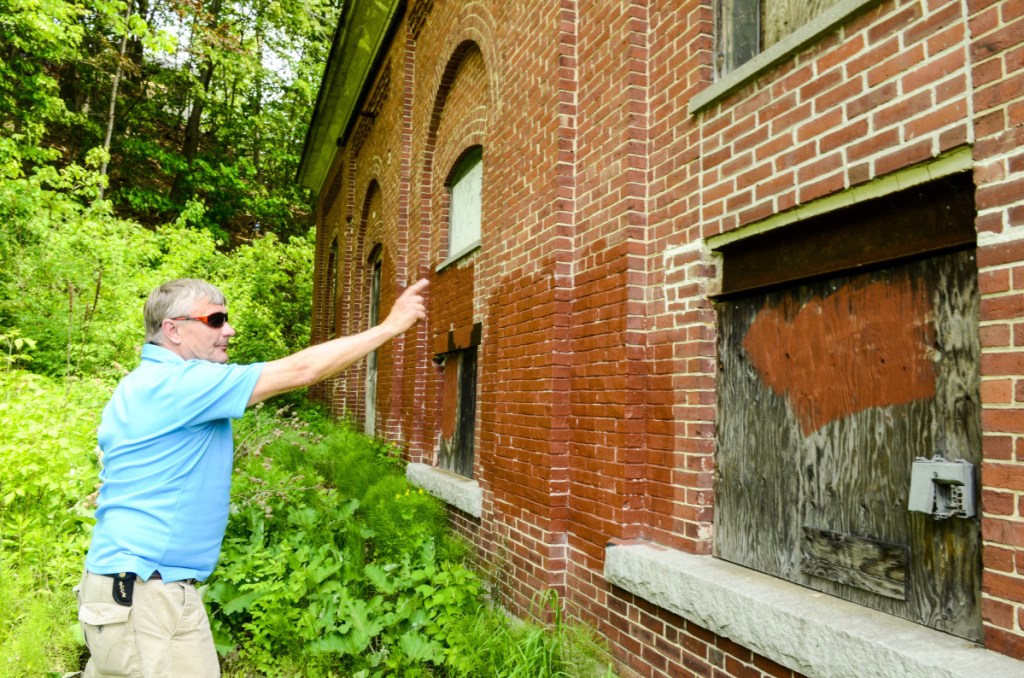
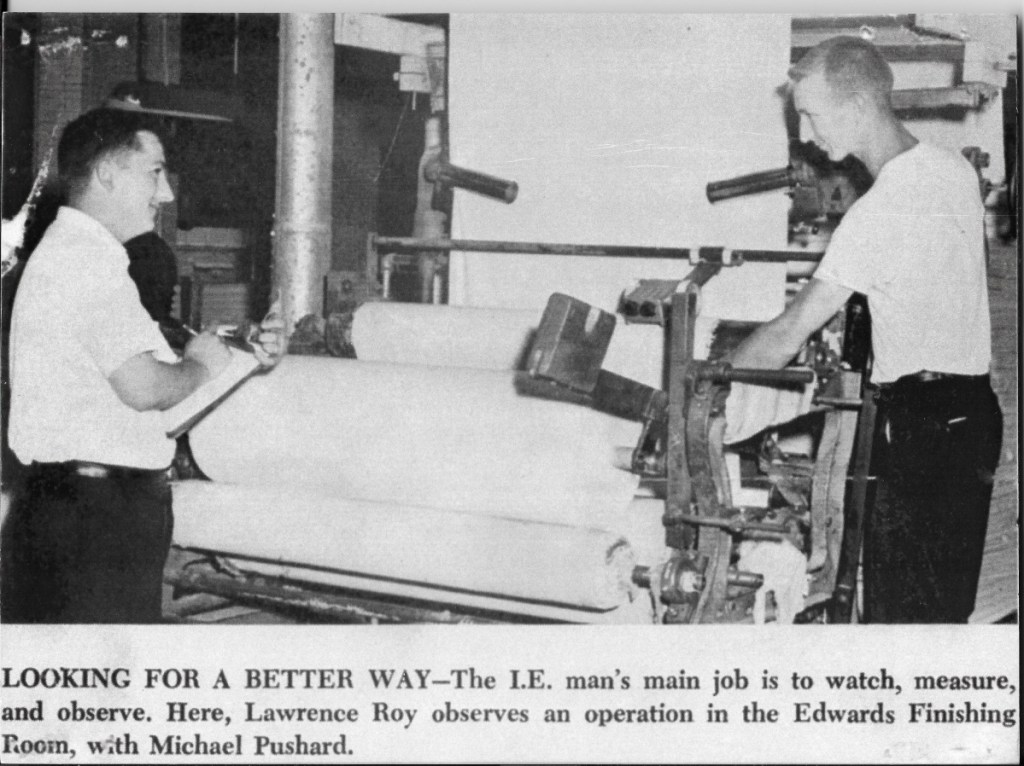
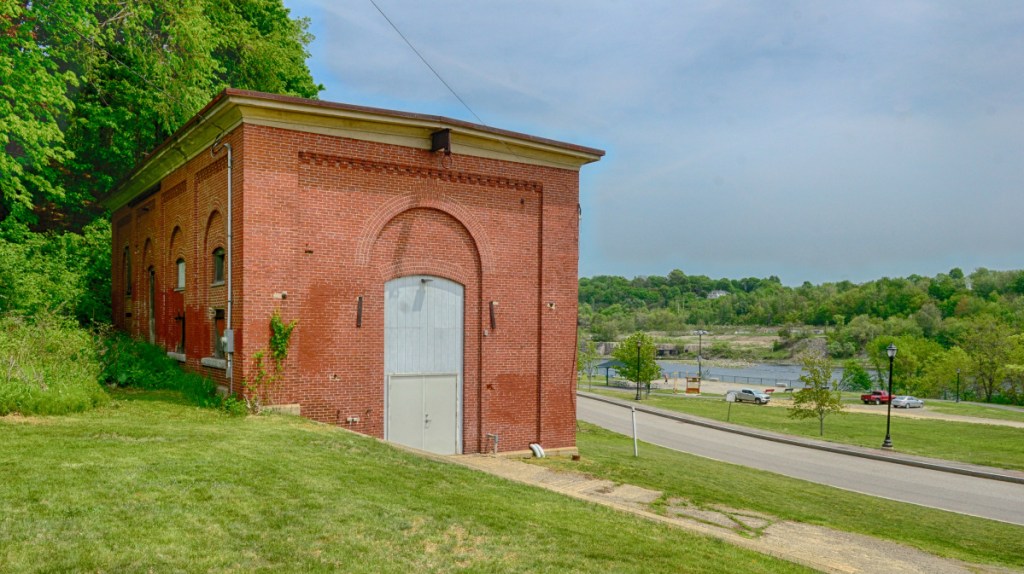
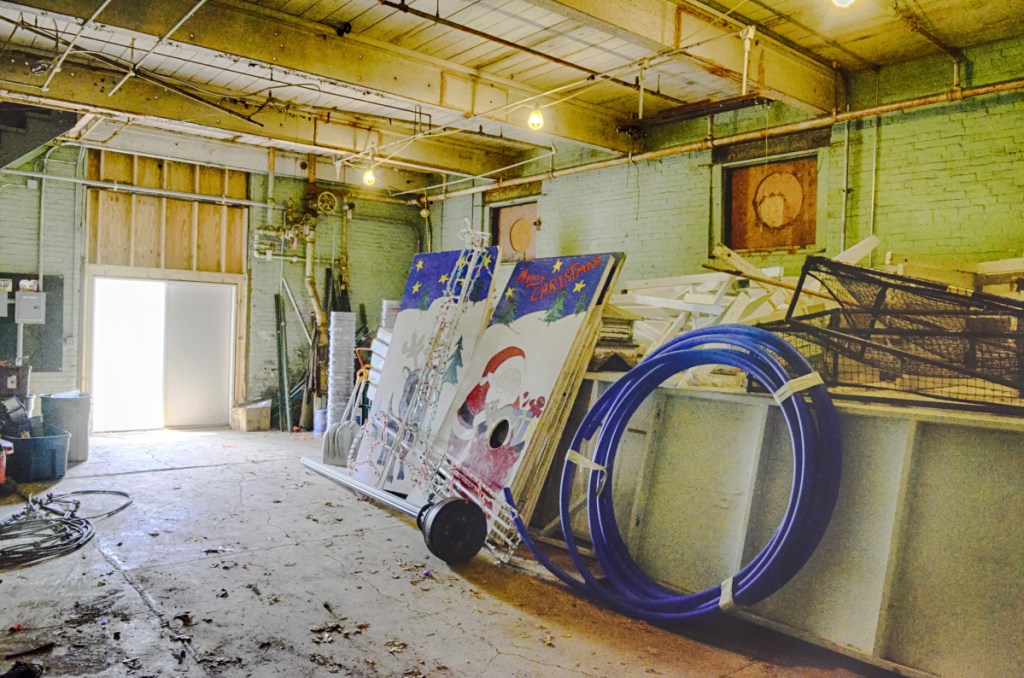
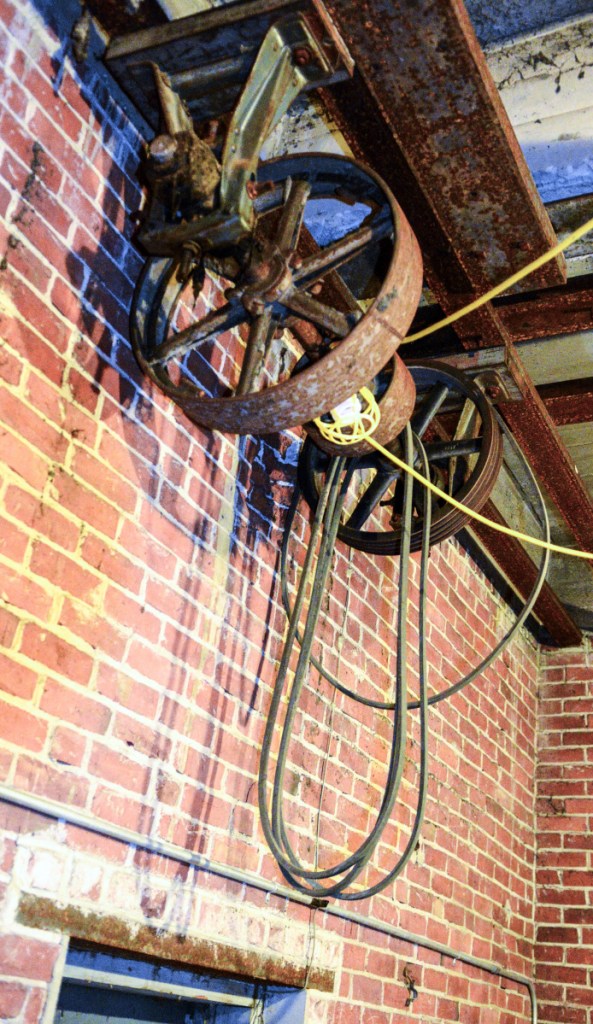
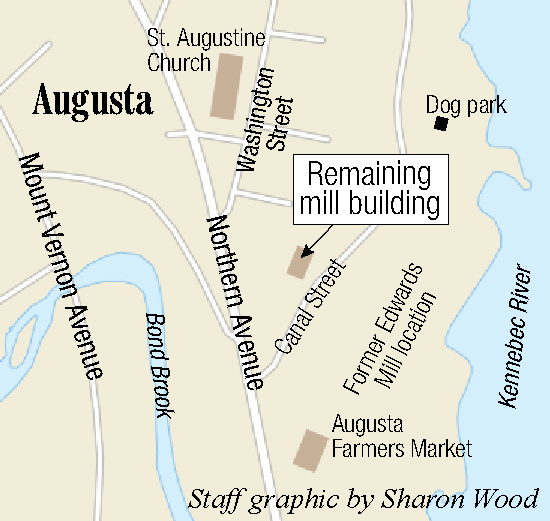

Success. Please wait for the page to reload. If the page does not reload within 5 seconds, please refresh the page.
Enter your email and password to access comments.
Hi, to comment on stories you must . This profile is in addition to your subscription and website login.
Already have a commenting profile? .
Invalid username/password.
Please check your email to confirm and complete your registration.
Only subscribers are eligible to post comments. Please subscribe or login first for digital access. Here’s why.
Use the form below to reset your password. When you've submitted your account email, we will send an email with a reset code.